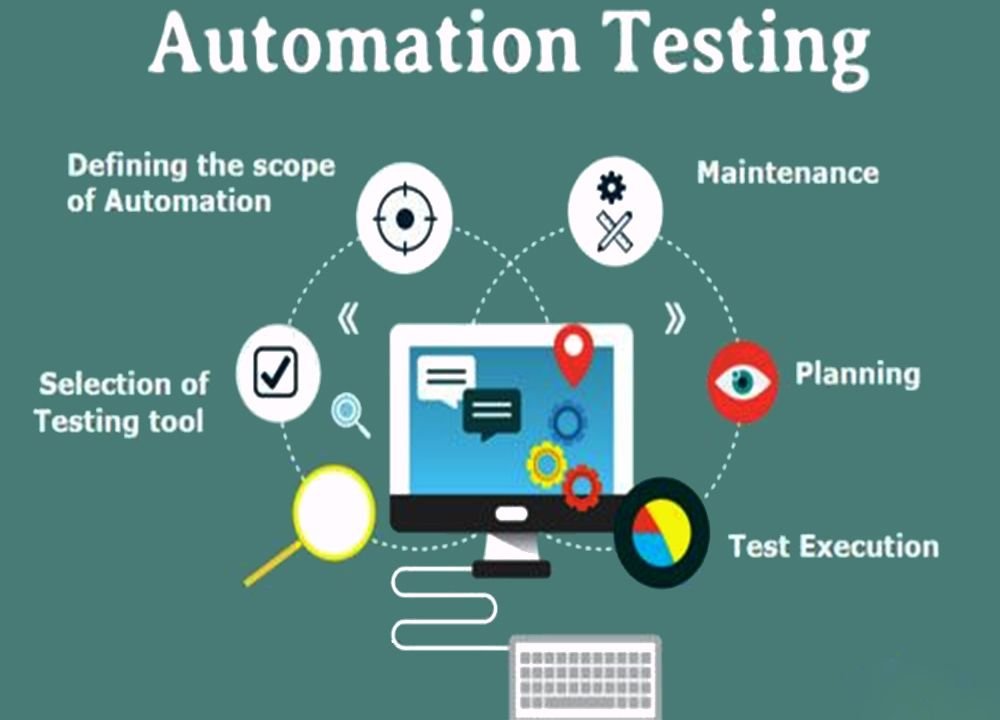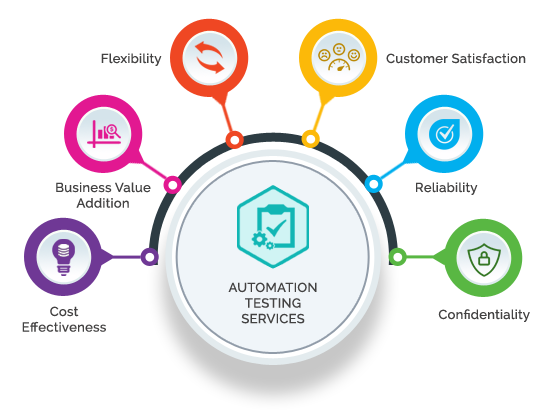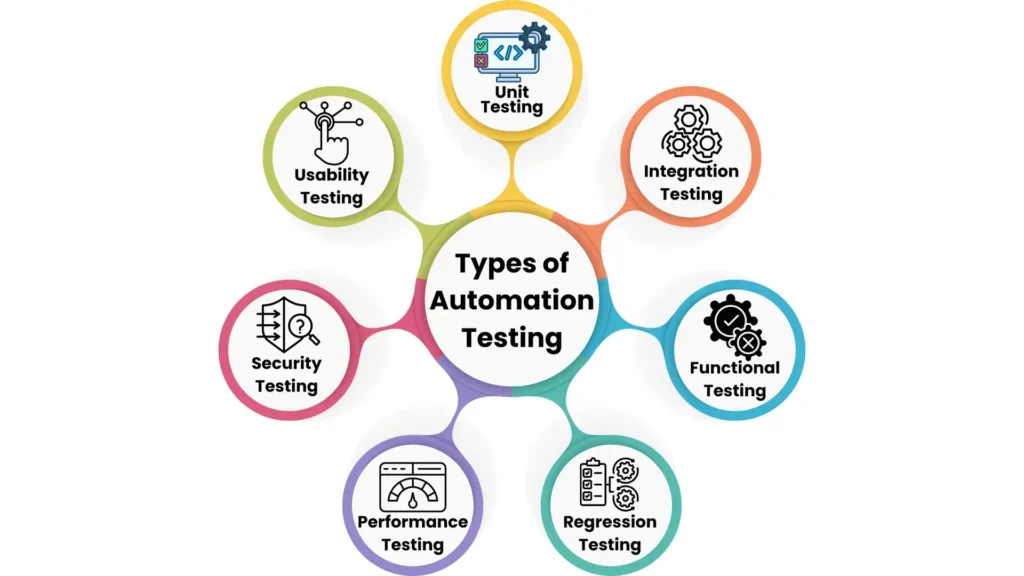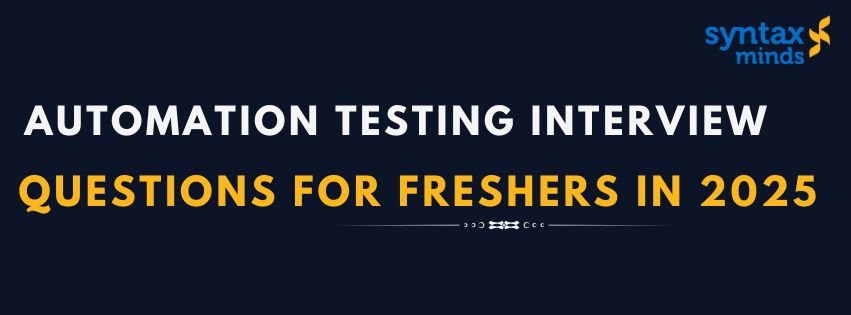Table of Contents
ToggleAutomation testing interview questions for freshers in 2025
Basic Questions
- What is automation testing, and why is it important?
Answer: Automation testing uses tools and scripts to execute test cases, reducing manual effort, increasing accuracy, and enabling faster feedback. - How does automation testing differ from manual testing?
Answer: Automation testing is tool-driven, faster, and suitable for repetitive tasks, whereas manual testing is performed by humans and is time-consuming. - What are some commonly used automation testing tools?
Answer: Selenium, Appium, Cypress, TestNG, JUnit, Postman, and Robot Framework. - What are the key components of an automation framework?
Answer: Test data, test scripts, libraries, reporting tools, and integration with CI/CD pipelines. - Explain the Software Testing Life Cycle (STLC).
Answer: STLC includes requirement analysis, test planning, test case development, test environment setup, test execution, and test closure. - Can you list the advantages and disadvantages of automation testing?
Answer: Advantages: Faster execution, repeatability, and reliability. Disadvantages: High initial setup cost and maintenance overhead. - What types of tests are best suited for automation?
Answer: Regression tests, smoke tests, and repetitive test cases. - What is a test script?
Answer: A set of instructions written in a programming or scripting language to automate the testing process. - What is regression testing?
Answer: It ensures that new code changes do not break existing functionalities. - What are the common challenges in automation testing?
Answer: Handling dynamic elements, flakiness of scripts, initial setup costs, and tool compatibility.

Tool-Specific Questions
- How does Selenium work?
Answer: Selenium automates browsers by interacting with the browser’s DOM and executing test scripts using WebDriver APIs. - What is the difference between Selenium WebDriver and Selenium IDE?
Answer: WebDriver supports scripting in various languages, while IDE is a record-and-playback tool. - Why is TestNG used in Selenium testing?
Answer: TestNG provides test configuration, parallel execution, and detailed reporting. - How would you handle dynamic web elements in Selenium?
Answer: Use XPath functions like contains(), starts-with(), or CSS selectors with partial matching. - What are locators in Selenium?
Answer: Locators identify web elements; types include ID, name, class, XPath, and CSS selectors. - How do you perform cross-browser testing in Selenium?
Answer: Use WebDriver with desired capabilities to test on different browsers. - What is Appium, and what is it used for?
Answer: Appium is an open-source tool for automating mobile apps on Android and iOS platforms. - What is the difference between Cypress and Selenium?
Answer: Cypress is faster, works directly with the browser, and is more suited for modern JavaScript-based applications. - How do you integrate an automation tool with CI/CD pipelines?
Answer: Use tools like Jenkins or GitHub Actions to trigger automation scripts during builds or deployments. - What is JUnit?
Answer: JUnit is a testing framework for Java applications, widely used in test automation.

Programming Questions
- Why are programming skills important in automation testing?
Answer: They enable test script creation, debugging, and handling complex test scenarios. - Write a simple Selenium WebDriver script:
Answer:
java
Copy code
WebDriver driver = new ChromeDriver();
driver.get(“https://example.com”);
String title = driver.getTitle();
System.out.println(“Title is: ” + title);
driver.quit();
- How do you handle exceptions in your test scripts?
Answer: Use try-catch blocks or define explicit waits to handle exceptions like NoSuchElementException. - What is Object-Oriented Programming (OOP)?
Answer: OOP uses classes and objects; key concepts include encapsulation, inheritance, and polymorphism. - What are assertions in testing?
Answer: Assertions validate test results, such as assertEquals() or assertTrue().

Frameworks and Best Practices
- What is a Page Object Model (POM)?
Answer: POM separates test scripts from page-specific locators and methods, improving code maintainability. - How do you decide which test cases to automate?
Answer: Automate high-priority, repetitive, and stable test cases. - What is keyword-driven testing?
Answer: It uses predefined keywords for test case execution, separating test design from script writing. - How do you ensure script maintainability?
Answer: Use modular frameworks, POM, and proper version control. - How do you handle test data?
Answer: Use external files like Excel, JSON, or databases for data-driven testing.
Scenario-Based and Advanced Questions
- How would you automate a login feature?
Answer: Identify fields, write a script to fill credentials, submit the form, and verify redirection or success messages. - How do you handle pop-ups in Selenium?
Answer: Use Alert interface methods like accept(), dismiss(), or getText(). - How do you automate REST API testing?
Answer: Use tools like Postman or libraries like RestAssured to send requests and validate responses. - How do you reduce flaky tests?
Answer: Use explicit waits, stable locators, and avoid hardcoded delays. - How do you measure automation success?
Answer: Metrics include defect detection rate, execution time reduction, and ROI.

